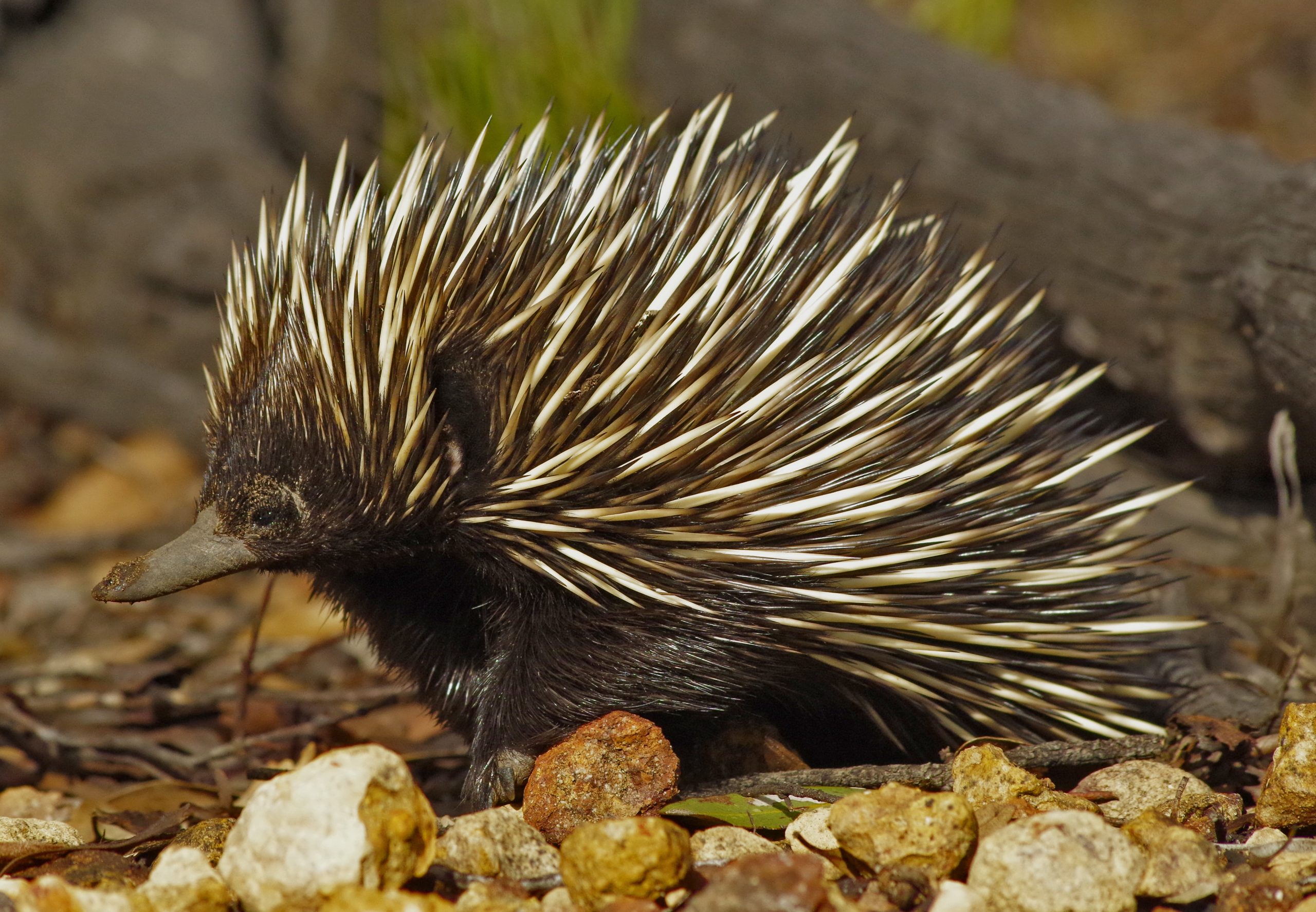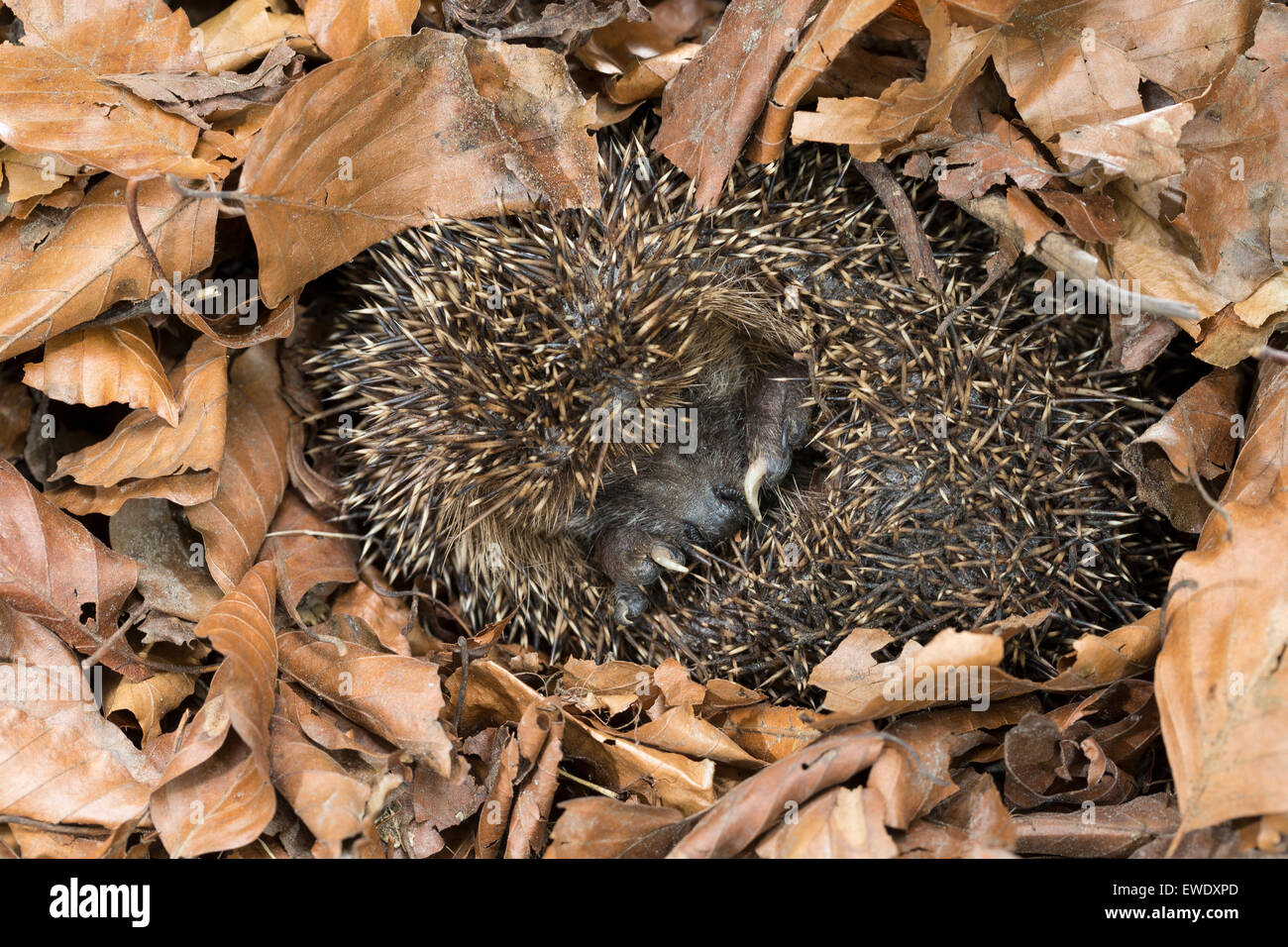
Digging Echidnas are Essential Australian Ecosystem Engineers The Official PLOS Blog
Echidnas do not construct a complex hibernaculum, (although some mothers dig a nursery burrow after mating) and in our study area were found to hibernate in piles of bark, hollow logs, log windrows, refuges under rocks, and grass tussocks, or simply dug into the soil.

European hedgehog, hibernation, overwinter survival, Europäischer Igel, Winterschlaf
Echidnas hibernate in some of these areas, but in their studies of hibernation and reproduction in Kosciuszko National Park (Beard, Grigg, & Augee, 1992), and south-east Queensland (Beard & Grigg, 2000), Beard and co-workers never found more than one male with a female, and also noted that no females re-entered hibernation after mating.

ShortBeaked Echidna Bush Heritage Australia
Echidnas hibernate in natural shelters; do not dig burrow (Nicol and Andersen 2007a; Nicol et al. 2011) Hollow structures at the base of trees, log piles, under rocks, in piles of leaves, grass tussocks, loose soil. To protect themselves in places with no cover, echidnas will dig into the ground and cover themselves with soil.

Ten reasons to love echidnas Natural History Museum
The animal does not have brown fat, an energy reserve associated with hibernation in placental mammals. But the echidna does gain weight before beginning hibernation, just as more advanced mammals do.

Taronga Zoo's Rudolph the echidna emerges from the ground after hibernation Daily Mail Online
Echidnas hibernate during the cold winter months in burrows. No matter what the time of the year, they can only enter REM sleep when they are around 77 F (25 C). Diet .

Taronga Zoo's Rudolph the echidna emerges from the ground after hibernation Daily Mail Online
The timing of hibernation in Tasmanian echidnas: why do they do it when they do? Comp Biochem Physiol B Biochem Mol Biol. 2002 Apr;131(4):603-11. doi: 10.1016/s1096-4959 (02)00018. and that the ability to completely omit breeding in some years, and hibernate through to spring is an adaptation to an uncertain climate. Publication types

echidna Nest
Abstract. Short-beaked echidnas undergo both torpor and hibernation, expressed to different extents in different climates. We propose that when well fed animals hibernate in comparatively mild.

Taronga Zoo's Rudolph the echidna emerges from the ground after hibernation Daily Mail Online
The short-beaked echidna (Tachyglossus aculeatus, ∼3 kg; bottom-left),. Many hibernators fatten extensively before the hibernation season, do not hibernate when lean, and rely to a large extent on stored fat as an energy source in winter; some species use food caches or a combination of fat and caches.

echidna Bird Watching HQ
Short-beaked echidnas undergo both torpor and hibernation, expressed to different extents in different climates. We propose that when well fed animals hibernate in comparatively mild climates, with food available, they are using the winter cold as a resource and "putting themselves on ice" until the next breeding season.

Echidnas hibernate during the cold winter months in their burrows. echidna echidnas animals
Echidnas (pronounced e-kid-nas) make up four of the five living species in a group of egg-laying mammals known as monotremes.. During the colder months, they hibernate in burrows,.

Egg Laying Mammals, Australia Animals, Interesting Animals, Echidna, Platypus, Natural Phenomena
Echidnas (Tachyglossus aculeatus) are amongst the largest deep hibernators, but it is difficult to get them to hibernate normally under laboratory conditions.We measured body temperature (T b)in 14 free-ranging echidnas using implanted data-loggers.Cooling during entry into hibernation bouts followed a Newtonian cooling curve, and conductances calculated from cooling curves were identical to.

Ten reasons to love echidnas Natural History Museum
Echidnas (Tachyglossus aculeatus) are amongst the largest deep hibernators, but it is difficult to get them to hibernate normally under laboratory conditions. We measured body temperature (Tb) in.

Echidna Fact Sheet Blog Nature PBS
Abstract. During hibernation there is a slowing of all metabolic processes, and thus it is normally considered to be incompatible with reproduction. In Tasmania the egg-laying mammal, the echidna ( Tachyglossus aculeatus) hibernates for several months before mating in mid-winter, and in previous studies we observed males with females that were.

Taronga Zoo's Rudolph the echidna emerges from the ground after hibernation Daily Mail Online
10 September 1997. A University of Queensland PhD student is searching for answers to 'pointed questions' about the unusual hibernation habits of one of Australia's best-loved but least understood mammals, the enigmatic echidna. Louise Kuchel wants to know why echidnas disappear underground in March and April when there is neither a shortage of.

Taronga Zoo's Rudolph the echidna emerges from the ground after hibernation Daily Mail Online
Some echidnas hibernate. Unlike all other mammals that have 2 sex chromosomes (XX females, XY males), female echidnas have 10 sex chromosomes (10X) and males have 9 (5X4Y). The spines of echidnas are just really thick hairs. They're made out of keratin, which is the same as what our hair and fingernails are made of.

Interesting Facts About Echidnas And How We Can Protect Them
Echidnas hibernate in underground burrows or hollowed‐out logs during bush fires in the hot, dry Australian outback. They stay carefully hidden away until it's safe to emerge to find food. 9. Despite how nice it would be to curl up under a warm blanket and sleep away the cold winter months, sadly us humans can't hibernate.